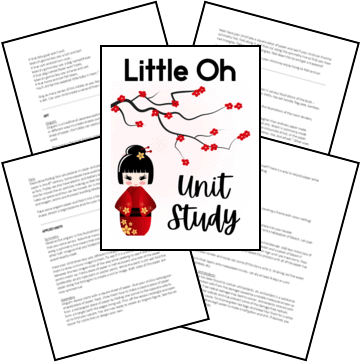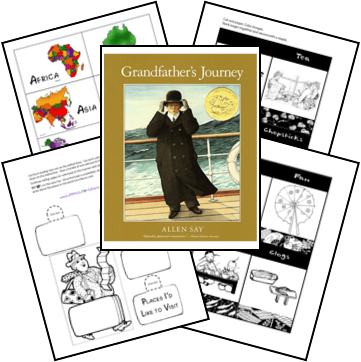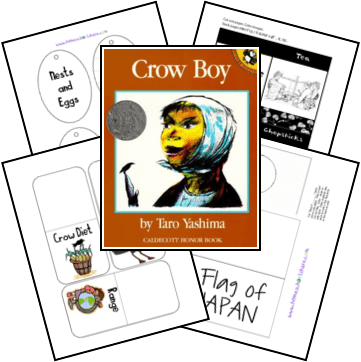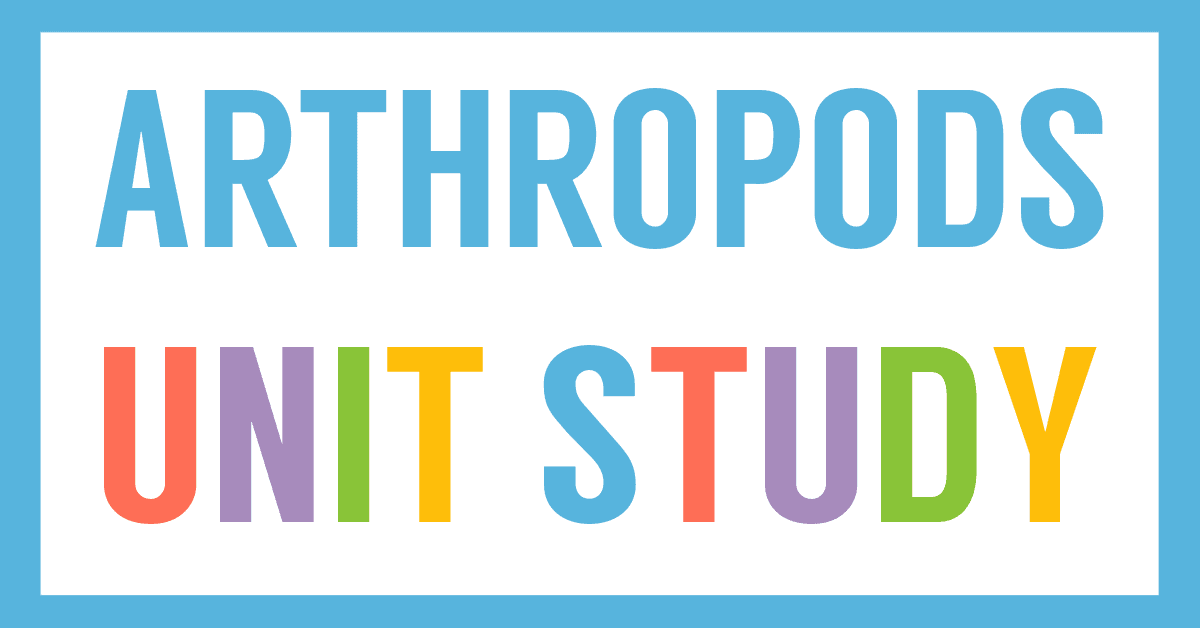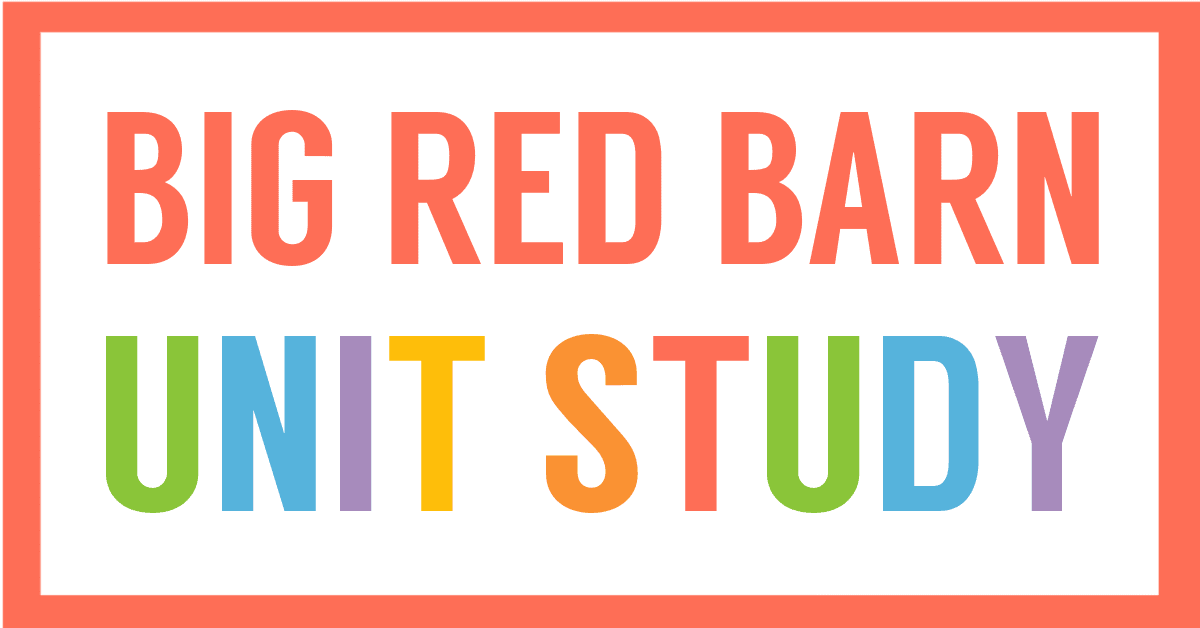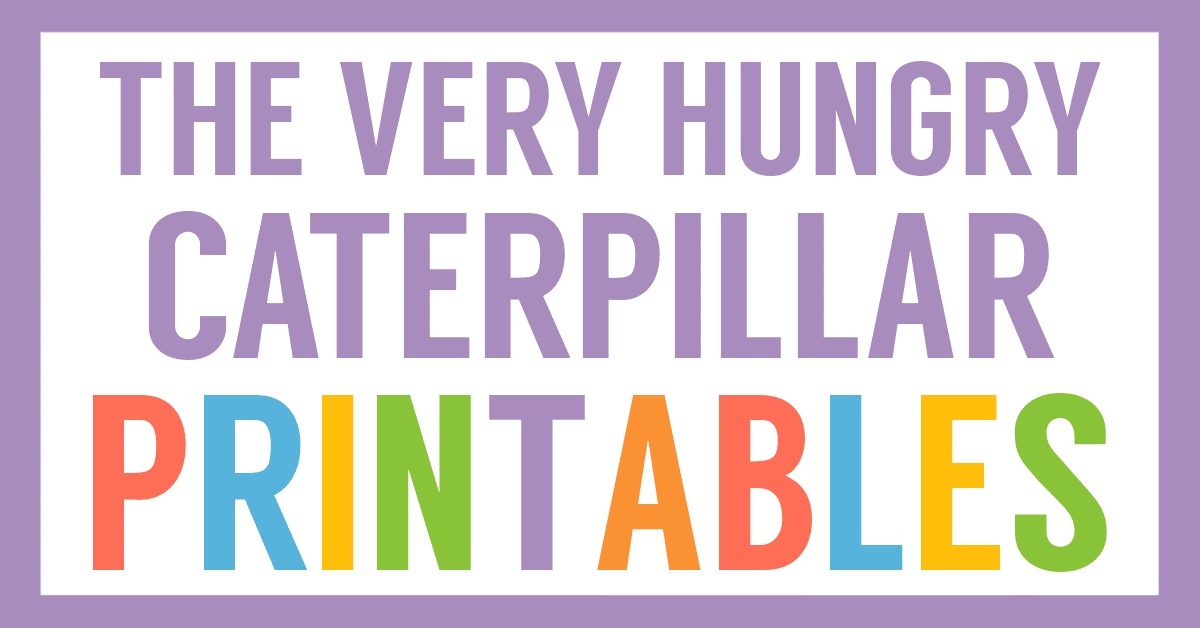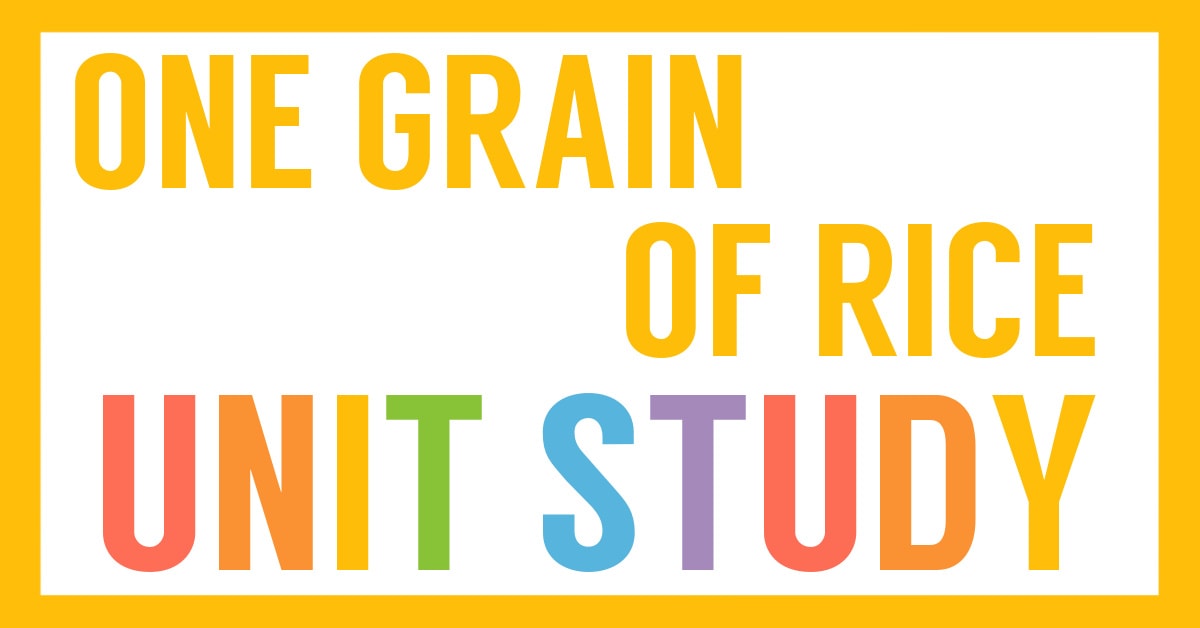Affiliate Disclaimer
We sometimes use affiliate links in our content. This won’t cost you anything, but it helps us to keep the site running. Thanks for your support.
This unit study includes lessons and activities based on the book Little Oh by Laura Krauss Melmed.
Little Oh, an origami girl who has come to life for her creator, a lonely Japanese woman, is lost one day in a bustling market. She is chased by a hungry dog, floated down a foaming cataract in a teacup, and flown homeward by a friendly crane. A motherless boy finds her, and when he and his father return Little Oh to her mother, something wonderful happens.
This Little Oh unit study is jammed packed with lessons on Japan, Japanese culture, writing, vocabulary, origami, and so much more!
Thanks to Denise Gregson for preparing this Little Oh unit study.
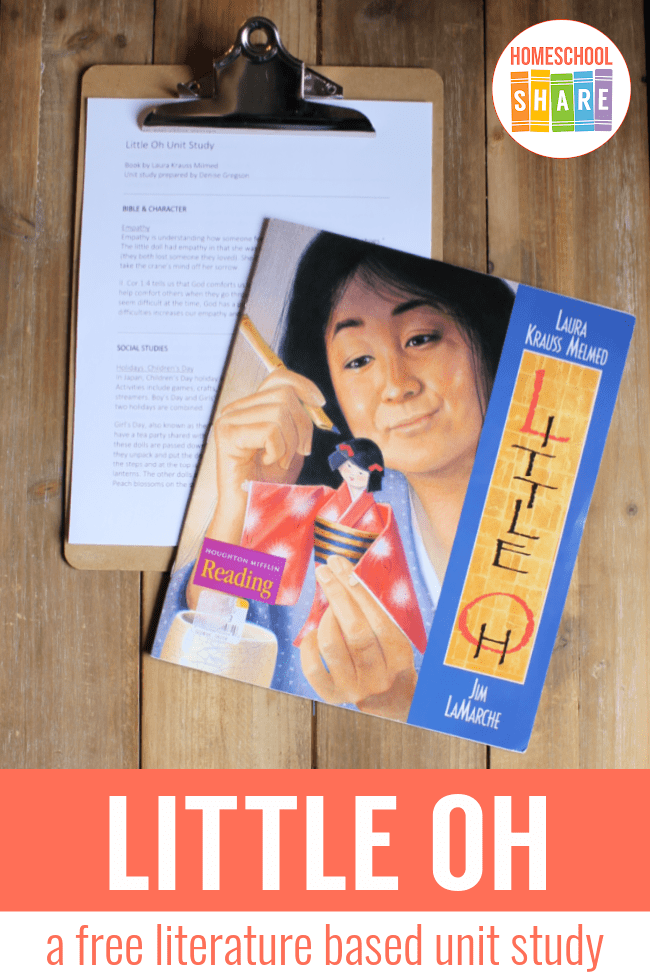
Little Oh Unit Study Lessons
Here is a sample of the lessons found in this Little Oh unit study:
Character Building: Empathy
Empathy is understanding how someone feels or “putting yourself in their shoes.” The little doll had empathy in that she was able to understand how the crane felt (they both lost someone they loved). She decided to sing songs and tell stories to take the crane’s mind off her sorrow.
Social Studies: Holidays–Children’s Day
In Japan, Children’s Day holiday is celebrated on May 5th honoring boys and girls. Activities include games, crafts, special plays, the beating of drums, and flying fish streamers. Boy’s Day and Girls’ Day used to be celebrated separately but now the two holidays are combined.
Girl’s Day, also known as the Peach Blossom Festival, is a time when Japanese girls have a tea party shared with their special dolls–as many as 15 of them! Many of these dolls are passed down from their mothers. A week or two before the holiday they unpack and put the dolls on special shelves built like steps. Red cloth covers the steps and at the top is placed the Emperor and Empress doll along with lanterns. The other dolls are placed in the lower steps along with doll furniture. Peach blossoms on the steps represent beauty. The girls dress in kimonos and enjoy tea and cake with friends and show off their dolls. The original purpose of this holiday was to clean away evil spirits through the ceremony.
A month prior to Boy’s Day, fathers put up a bamboo pole in the family garden which has a pinwheel at the top. It contains a pulley to hoist up streamers–one for each boy in the family. Windsocks shaped like carp fish are flown atop. Carp are strong fish that swim upstream and represents the parent’s hope that their boys will have the qualities of the carp: strength and courage. Just as the dolls for Girl’s Day are passed from mother to daughter, these streamers are often handed down from father to son. Inside the house, boys decorate small toy men dressed as Japanese warriors (samurai). Tiny helmets swords and spears are placed to represent courage and strength. Boys visit the homes of their friends to see the display and eat sweets together.
Art: Origami
Origami is a traditional Japanese pastime where a single square of paper is folded in different ways to create shapes such as animals or plants. Since it only takes a sheet of paper, the hobby can easily be enjoyed anywhere. Washi paper is often used.
The crane is the most famous origami figure. The Japanese view the crane as a symbol of long life and good fortune. Most Japanese people have made at least one in their life. According to Japanese belief, good health will result from folding a thousand origami cranes. If a person is very sick, his or her friends may decide to work together to fold a thousand cranes and string them on thread into long chains. They take them to the sick friend in hopes of easing the pain.
Find a book at the library or a website that teaches the origami craft.
You can grab a copy of the entire Little Oh unit study in an easy-to-print file at the end of this post.
How to Get Started with the Little Oh Unit Study
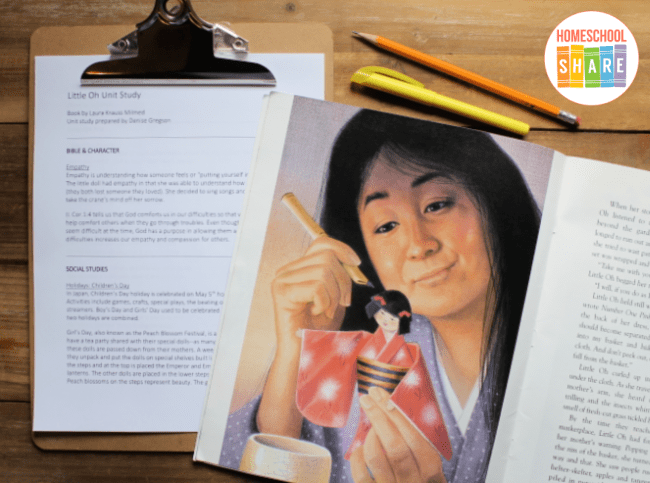
Follow these simple instructions to get started with the Little Oh unit study:
- Buy a copy of the book, Little Oh, or grab one from your local library.
- Print the Little Oh unit study.
- Choose the lessons you want to use with your student (a highlighter works great for this).
- Enjoy a week of literature-based learning with your student.
Download Your Little Oh Unit Study
Simply click on the image below to grab the free Little Oh unit study.
Learn More About Japan with These Resources
Check out these other unit studies and lapbooks set in Japan.

